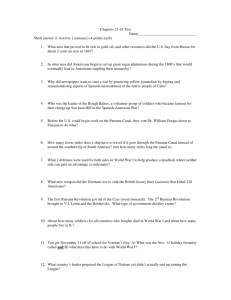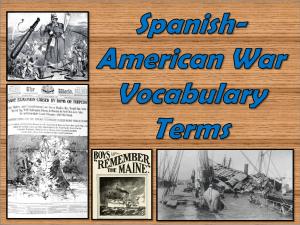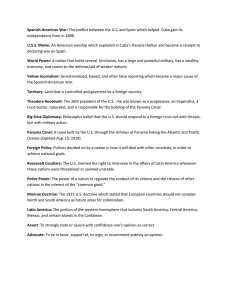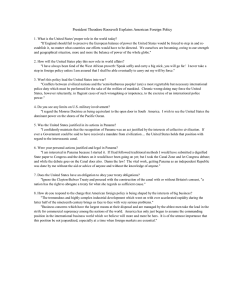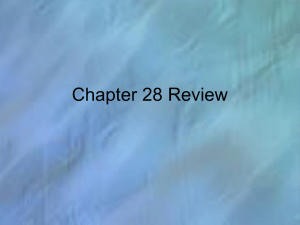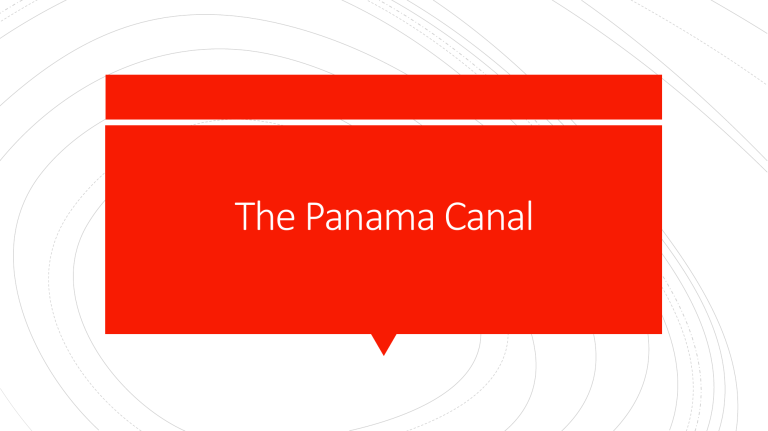
The Panama Canal A Shortcut The late 1800s and early 1900s saw the United States become imperialistic. New markets and naval bases were being created all over the Pacific Islands and in the Caribbean. For years prior to American imperialism, discussions had taken place about building a short cut through Central America that would link the Atlantic and Pacific Oceans. The Canal would provide a much shorter route for merchants ships as well as naval vessels. This would greatly benefit American trade and protection. It was determined that the best location for a new “canal” would most likely be in either Nicaragua or Panama. A Shortcut (cont.) The United States decided in the early 1900’s it would begin the process of creating a canal in Central America. Columbia Problem It was decided that the Panama location would be the best fit for the work that needed to be done. At the time, however, the Panama territory was owned by the national of Columbia. When the United States approached Columbia with the idea of a canal, the response was a very quick “no”. When the Columbian senate voted to reject America’s proposal of a canal, the Panamanian people revolted. On November 3rd, 1903, the people of Panama staged an uprising against Columbia. By November 6th, U.S President Theodore Roosevelt was Revolution in Panama assisting the Panamanian people in establishing a new government. The Columbian government received $20 million for the loss of the Panama territory. The pathway to build the canal was now complete. Construction of the Canal From 1903 to 1914, the United States funded the construction of the Panama Canal. The United States would control all activity through the canal, and who could use it, until 1999. Additionally, Panama received a $10 Million payment in 1914, and $250,000 each year as rent for the use of the canal. Today, roughly 14,000 ships per year pass through the Canal.
